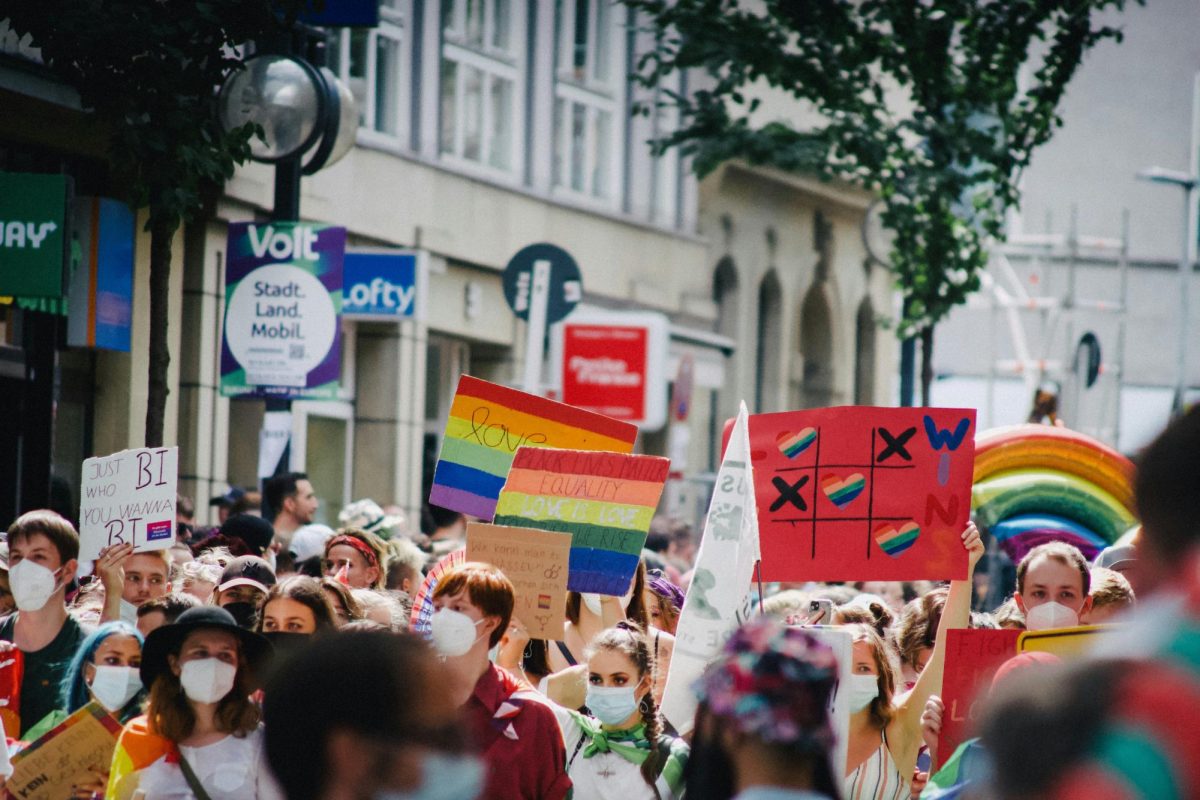Welcome to the fifth edition of The News in Conversation. In every iteration of this column, The Wellesley News will pose a series of questions to a group of students on campus and publish the answers. If you have any suggestions for who we should reach out to next, email [email protected].
This edition of the column features some of the voices of the students behind the Wellesley Covid Action Plan. The answers to these questions were written by current members of the group. Answers were lightly edited for grammar and formatting. The full version is online.
What is the Wellesley Covid Action Plan and why was it started?
Wellesley Covid Action Plan is an effort led by high-risk, chronically-ill and disabled students to address the lack of COVID-19 protections on campus and the lack of support for community members who test positive. Our efforts were prompted by the administration’s shift in COVID-19 policies at the start of the semester, which stripped away many of the protections that high-risk students, faculty and staff were relying on to safely go about our day-to-day lives. Even though much of the country is happy to pretend that the pandemic is over, that’s simply not the reality. Hundreds of people are still dying every week from COVID-19. We understand why the College administration might be motivated to fall into line with our peer institutions — we really do. But we hope that our fellow community members are better than that. There is a lot than can be done at the community level to combat a threat like COVID-19, so our efforts are directed at enabling our fellow students, faculty and staff to accomplish what the administration is failing to do: protect the Wellesley community, especially those that are high-risk, from the negative effects of COVID-19.
What are your goals for this semester and school year?
So far this semester, we’ve created a few resources to help community members reduce the risk of COVID-19 on campus, and to support students who test positive for COVID-19. Our Recommended Best Practices for COVID-19 document outlines several steps that community members can take to protect those that are high-risk. We hope to encourage more people to start practicing these recommendations, and to increase the document’s visibility overall. We would like to get more people using the anonymous bathroom sign-out sheets that we created to mitigate potential spread of COVID-19 in communal bathrooms. We would also love to get more engagement with our Volunteer Food Delivery program. Ideally, we are looking to have enough active volunteers to bring food to anyone that is struggling to get to the dining halls, either because of COVID-19 or because of other health issues. We know that getting COVID-19 is an absolutely miserable experience, so we want students in quarantine to not have to worry about getting themselves to the dining halls when they feel sick or potentially exposing others while they get food.
Finally, we are working on a rapid test fundraiser to make a stockpile of rapid tests easily available for students on campus. Although we have been encouraging everyone to get free rapid tests through their insurance, we have noticed that many students are not able to get those free tests by the time they get exposed to COVID-19. We are hoping to raise enough money to maintain a stockpile for folks who cannot easily access free tests, who suspect they are sick and do not have any rapid tests on hand or who want to make sure they are no longer contagious before ending isolation. Our goal for the school year is to secure enough financial support and manpower to maintain these resources long term, and to make them part of daily life on campus.
What should readers know about the impact that the pandemic is having on disabled, neurodivergent and chronically ill students?
The reality is that many of us are risking our lives and health by being here, and we do not really have another choice. As we wrote in the introduction to our Recommended Best Practices document, many high-risk students do not have the financial or logistical means to stay at home while the pandemic rounds out its third year, nor should we be forced to do so. Those who are immunocompromised are in the most vulnerable position, and they are the ones who are facing the hardest choices as the pandemic continues. There’s also a myriad of chronic illnesses that might not necessarily put someone at risk of death from COVID-19, but are likely to cause long-term complications. For example, one of our members has a complex chronic illness that severely limits their daily activity level and causes chronic pain. Others with that same diagnosis have reported that their fatigue and pain worsened to the point of leaving them permanently bed-bound after having COVID-19. There are also several pre-existing conditions which increase the likelihood of developing Long Covid — a severe post-illness that often leaves people with new, disabling symptoms. For Wellesley students with disabilities and complex chronic illnesses, getting COVID-19 might mean permanently losing the prospect of a college education, a career and an active daily life.
What actions would you like the College administration to take to keep all members of the Wellesley community safe?
In addition to minimizing COVID-19 protections on campus, the administration has also succeeded in creating an environment that disincentives students from taking measures to protect the well-being of high-risk community members. One issue we have heard about multiple times is students deliberately not testing when they start to experience COVID-19 symptoms because they feel like they cannot afford to miss class while they are in quarantine. The administration can make students much more willing to protect others from COVID-19 if they provide an academic safety net for those who test positive. This would include excusing absences beyond five days while students are still testing positive on rapid tests, excusing absences for roommates that might soon become contagious and providing infrastructure to enable professors to easily Zoom students into class. The administration can also open a second testing location so students do not have to trek all the way to the College Club, reinstate the Dashboard so the community can be informed of the levels of COVID-19 on campus and make masking mandatory in classrooms and other shared spaces.
What actions can Wellesley students, faculty and staff take to make sure that we’re keeping our community safe during this on-going pandemic?
We have outlined several steps that members of the Wellesley community can take to reduce the spread of COVID-19 on campus in our Recommended Best Practices for COVID-19 document. Generally, we ask others to be cognizant of the fact that people they interact with might be high-risk and to take steps to reduce transmission on campus. This includes masking in indoor spaces where a highly transmissible airborne virus can easily spread, such as common areas, study spaces and events. We also encourage our fellow community members to participate in regular asymptomatic testing, and to take extra precaution around others when there’s a possibility that they might be contagious. Ongoing support for our initiatives would also go a long way towards keeping the community safe. Reporting test results to our Unofficial Covid Dashboard, making deliveries for Volunteer Food Delivery and supporting our rapid test fundraiser are all great ways to make these community resources as effective as possible. We’ve made all our resources easily available at linktr.ee/wellesleycovidaction. Community members can follow our Instagram (@wellesleycovidaction) and Twitter (@WCovidAction) to stay updated on our efforts.





